October 10, 2011 – Many Canadians do not know that Thanksgiving is a statutory holiday in most jurisdictions of Canada, with the exception of the Atlantic provinces, although workers engaged in a federal undertaking or work on the east coast do enjoy this day off. As a liturgical (religious) festival, Thanksgiving corresponds to the English and continental-European Harvest festival, with churches decorated with cornucopias, pumpkins, corn, wheat sheaves, and other harvest bounty, English and European harvest hymns sung on the Sunday of Thanksgiving weekend. While the actual Thanksgiving holiday is on a Monday, Canadians might eat their Thanksgiving meal on any day of the three-day weekend, though Sunday and Monday are the most common (We had ours on Saturday). While Thanksgiving is usually celebrated with a large family meal, it is also often a time for weekend getaways. Tourist destinations such as Seattle, Washington, USA, which rely heavily on Canadian visitors, often hold festivals over Canadian Thanksgiving weekend.
Similar to the United States, traditions such as parades and football can be a part of Canadian Thanksgiving. The Kitchener-Waterloo Oktoberfest parade is the most widely known Canadian Thanksgiving Day parade and is broadcast nationwide on CTV. The Canadian Football League holds a nationally televised doubleheader known as the “Thanksgiving Day Classic”. It is one of two weeks in which the league plays on Monday afternoons, the other being the Labour Day Classic. Unlike the Labour Day games, the teams that play on the Thanksgiving Day Classic vary each year. On Saturday the BC Lions beat Calgary 33-31 and are now in first place in the CFL West (this could only happen in the Canadian Football). BC Lions placekicker Paul McCallum also has set a CFL record as he kicked his 29th and 30th consecutive field goals which breaks the record of 28 set by Dave Ridgway of the Saskatchewan Roughriders in 1993. The 41-year-old McCallum already holds the CFL record for the longest field goal. He made a 62-yard kick against the Edmonton Eskimos on Oct. 27, 2001, when he played for Saskatchewan.
History
Various First Nations in Canada had long-standing traditions celebrating the harvest and giving thanks for a successful bounty of crops. Canada’s First Nations and Native Americans throughout the Americas, including the Pueblo, Cherokee, Cree and many others organized harvest festivals, ceremonial dances, and other celebrations of thanks for centuries before the arrival of Europeans in North America. The history of Thanksgiving in Canada can be traced back to the 1578 voyage of Martin Frobisher from England in search of the Northwest Passage. In this, his third, voyage to the Frobisher Bay area of Baffin Island in the present Canadian Territory of Nunavut, it was also the intention to start a small settlement and his fleet of 15 ships were so fitted out with men, materials and provisions for this purpose. Years later, French settlers, having crossed the ocean and arrived in Canada with explorer Samuel de Champlain, in 1604 onwards also held huge feasts of thanks. They even formed ‘The Order of Good Cheer’ and gladly shared their food with their First Nations neighbours.
After the Seven Years’ War ended in 1763 handing over of New France to the British, the citizens of Halifax held a special day of Thanksgiving. Thanksgiving days were observed beginning in 1799 but did not occur every year. After the American Revolution, American refugees who remained loyal to Great Britain moved from the newly independent United States and came to Canada. They brought the customs and practices of the American Thanksgiving to Canada.
Lower Canada and Upper Canada observed Thanksgiving on different dates; for example, in 1816 both celebrated Thanksgiving for the termination of the war between France and Great Britain, the former on 21 May and the latter on 18 June. In 1838, Lower Canada used Thanksgiving to celebrate the end of the Lower Canada Rebellion. Following the rebellions, the two Canada’s were merged into a united Province of Canada, which observed Thanksgiving six times from 1850 to 1865.
The first Thanksgiving Day after Canadian Confederation was observed as a civic holiday on April 5, 1872 to celebrate the recovery of the Prince of Wales (later King Edward VII) from a serious illnesses. Starting in 1879 Thanksgiving Day was observed every year, but the date was initially a Thursday in November. The date of celebration changed several times until, in 1957, it was officially declared to be the second Monday in October. The theme of the Thanksgiving holiday also changed each year to reflect an important event to be thankful for. In its early years it was for an abundant harvest and occasionally for a special anniversary.
After World War I, an amendment to the Armistice Day Act established that Armistice Day and Thanksgiving would both be celebrated on the Monday of the week in which November 11 occurred, starting in 1921 (my Dad was 3). Ten years later, in 1931, the two days became separate holidays, and Armistice Day was renamed Remembrance Day. From 1931 to 1957, the date was set by proclamation, generally falling on the second Monday in October, except for 1935, when it was moved due to a general election. In 1957 (Dan was 2) Thanksgiving was permanently set to be the second Monday in October.
Thanksgiving is not a Mexican holiday. In the past 10 to 15 years Mexicans have begun taking an interest in Thanksgiving. When we first came to Mexico in the 1980s some Mexicans actually thought that Thanksgiving was when Americans celebrated Christmas. Now they have a better idea which is not a surprise given Walmart and Costco which sells turkeys in Mexico, are attempting to convince the Mexican public to celebrate Thanksgiving so they could sell more turkeys. Mexicans do eat turkey (turquía) actually all year round. The turkey was first domesticated in pre-hispanic Mexico and is part of many traditional Mexican dishes. Also Mexicans eat turkey at Christmas and or New Years.
httpv://www.youtube.com/watch?v=HOm-15621bs&feature=related


